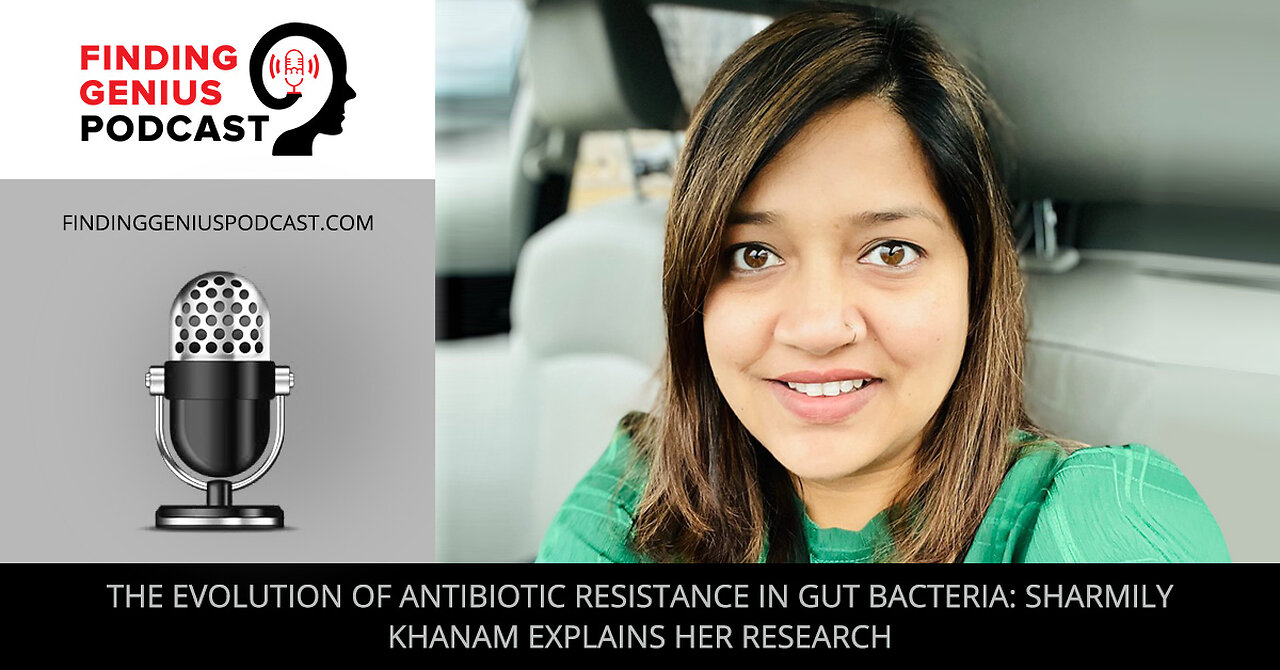Premium Only Content

The Evolution of Antibiotic Resistance in Gut Bacteria: Sharmily Khanam Explains Her Research
While scientists know antibiotic resistance is linked to the widespread use of antibiotics, understanding the physiology and microbiome of guts that have never been exposed to synthetic antibiotics might offer information to help address this resistance.
Researcher Sharmily Khanam designed a study to tackle this gap in knowledge. She explains
1. How our understanding of resistance mostly comes from clinicallybrelevant bacteria that's pathogenic and our understanding is therefore incomplete;
2. Where she found a population without any exposure to synthetic antibiotics and what her research process is; and
3. What pattern and discovery this research has offered, namely the ubiquitous nature of the antibiotic resistant gene and additional questions this raises.
Dr. Sharmily S. Khanam is a Postdoctoral Research Associate with the Department of Microbiology and Plant Biology at the University of Oklahoma. She explains her initial question in her research, namely what the microbial population in our ancestors was like and how resistant they were to the current antibiotics. She and her colleagues are therefore studying a population in a remote village in the Amazon Forest in Peru.
Currently they are studying the scope and extent of antibiotic resistance in the gut microbiome population of this ancestral-like population, comparing them with the gut microbial population, physiology, and antibiotic resistant population in the microbiome of people exposed to modern antibiotics.
They are trying to see if our ancestral microbiome was well positioned to tolerate the modern day antibiotics. She explains that researchers need to fill the gap of knowledge in understanding the molecular mechanism involved in resistance to a diverse group of antibiotics.
She adds that at the same time, this will provide a foundation to investigate and characterize the molecular mechanism in the bacterial population and how that is related to host metabolism—the combination of host and microbial population is creating the outcome that scientists need to understand in order to interrupt this process and prevent resistance. She adds an explanation of their findings thus far and explains how this may help the medical community.
To learn more about this study, see her LinkedIn profile and Google scholar account.
-
 0:39
0:39
FGP
9 days ago📢 Why Are Insurance Rates Skyrocketing? 💸📈
551 -
 LIVE
LIVE
Dr Disrespect
4 hours ago🔴LIVE - DR DISRESPECT - NEW PC VS. DELTA FORCE - MAX SETTINGS
4,618 watching -
 1:38:56
1:38:56
SLS - Street League Skateboarding
1 day agoTop Moments from the Second Half of the 2024 SLS Championship Tour! All The 9’s 🔥
3.92K1 -
 LIVE
LIVE
In The Litter Box w/ Jewels & Catturd
19 hours agoWhere are the Epstein Files? | In the Litter Box w/ Jewels & Catturd – Ep. 750 – 2/26/2025
4,602 watching -
 24:22
24:22
Breaking Points
3 hours agoHouse GOP RAMS THROUGH Medicaid Cuts
5.83K3 -
 1:24:15
1:24:15
The Quartering
3 hours agoRep. Swalwell's VIRAL Confrontation, Jeff Bezos Op-Ed Announcement, and Canada's Anti-Musk Campaign
35.9K14 -
 1:22:57
1:22:57
Tucker Carlson
5 hours agoNancy Pelosi Stock Tracker Chris Josephs: How to Get Rich by Investing Like a Politician
109K39 -
 2:59:34
2:59:34
Barry Cunningham
5 hours agoWATCH LIVE: DOGE SUBCOMMITTEE HEARING!
36.2K19 -
 1:29:32
1:29:32
Simply Bitcoin
4 hours ago $2.93 earnedNEW REPORT PROVES This Bitcoin Bull Run is DIFFERENT!! | EP 1191
24.8K -
 1:23:50
1:23:50
Russell Brand
5 hours agoAI Visions, War Deals, and the Next Big Lockdown? – SF544
116K16